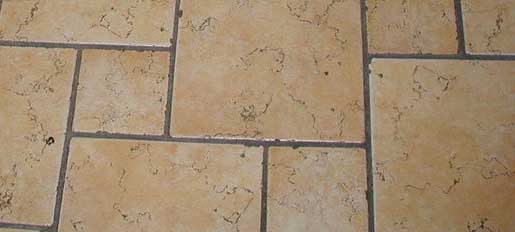Best Flooring For Reducing Asthma and Dust Mite Allergies
1Medical professionals advise to get rid of rugs and wall-to-wall carpets if you are asthmatic or allergic to dust mites and instead they recommend you to keep a bare floor, especially in bedrooms.
In this article, I will talk about the best bare flooring types for reducing asthma and dust mite allergies to consider in your house.
So, what types of flooring are best if you have allergies or asthma?
Hardwood Flooring

This is one of the most preferred choices for those who suffer from allergies the reason being it doesn’t provide the warm and moist environment for the dust mites to grow and produce allergens(their fecal matter).
Hardwood flooring is so easy to clean and maintain. It is very durable and can be sanded and refinished many times over.
On the other hardwood flooring is expensive and difficult to install.It doesn’t damper sound nor retain heat.It expands and shrinks depending on weather or temperature.
Cork Flooring

This type of flooring is not something you hear much about, but it does exist. It is a flooring derivative that is made from the bark of the Cork Oak.
Sometimes you will have to venture to certain specialty shops to find it. This sort of flooring is the substitute for those not looking to have hardwood floors. It also provides a mildew and fungus-free environment.
Bacteria, in general, has a very hard time living under these floors. Cork flooring has a warm and cozy feeling on your feet.
The best part about cork is that it does not require any kind of plywood underneath. Most floors require the plywood to be laid down before.
The one thing I will mention about this flooring is that it does float. If you do have any sort of floor padding underneath, you better make sure it’s level at every angle.
If it’s not, you could have some trouble. It’s best to level it all out before it’s installed. It’s also eco-friendly, so you won’t have to worry about that issue.
Ceramic Flooring

Is good for wet areas, or those areas that have some sort of moisture barrier.
Here’s the deal with flooring like stone, ceramic and porcelain tiling. They are good at keeping out the allergens. However, they do track a lot of dirt.
Now, here comes the disclaimer. Not all tiling will be allergy-resistant. Here’s a general rule to follow on this one. The smoother the floor is, the more allergy resistant the floor will be.
Linoleum is another good choice here. When compared to the vinyl options, linoleum is going to give you a better option.
Laminate Flooring

Here’s the next and final choice to consider for your allergies.Laminates are made from pieces of wood glued or bonded together sometimes using formaldehyde resins.
Laminate has this 50/50 quality when it comes to dealing with allergens and asthma. It all depends on who made it and the quality of the product. The better the quality on both sides, the better it will work for you.
Laminate has a hard flooring and it’s easy to clean. It’s also recyclable. You will have to check the rating on it, though.
Your best choices for laminate are either E1 or E0 (Low emissions of formaldehyde gas from the resins). Any other choices will not work out for you.
Conclusion
This is just an overview of the better options you have available to you. I encourage you to check with a flooring specialist to check the size of your house and advise you accordingly.
Images: Creative commons

